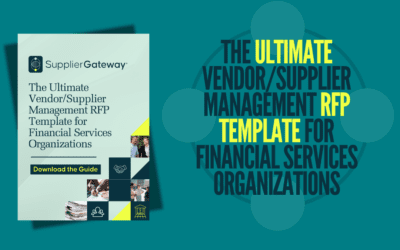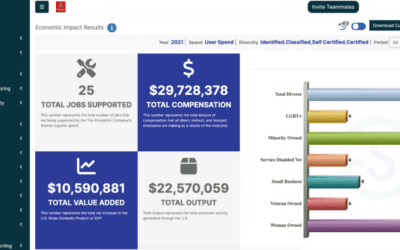Good vendor relationships are absolutely essential to running a successful business. However, managing these relationships can be complicated and overwhelming. Your business needs to keep track of a lot of information when it comes to vendors, from the very basics like who your vendors actually are, to far more intricate details like what kinds of access your vendors have, the SKUs they produce, and what internal policies apply to which vendor contracts.
Without a solid foundation for your vendor management program, keeping track of all of these working parts can quickly become a nightmare. An inadequate vendor management program can expose your business to undue risk, and lead to large problems that could ultimately damage your enterprise.
This series of five articles breaks down vendor management best practices, and should leave you with a much clearer understanding of what an effective vendor management program looks like.
In this article, you’ll learn how to establish a clear vendor management policy.
But before we get into the meat and potatoes of vendor management policy creation, let’s first establish what vendor management actually is.
What is Vendor Management?
The definition of vendor management has shifted significantly over the years. In the past, vendor management’s primary concern was keeping costs low. Today, vendor management is a far more complex process that involves creating strategic relationships with vendors that can truly drive your company’s success.
Vendor management is a process that includes how an organization identifies and selects vendors, evaluates and optimizes vendor performance, and encourages vendor collaboration and innovation.
Your organization needs a vendor management program for two main reasons. Firstly, you need to be able to evaluate vendor performance based on your company’s requirements. Secondly, you need to be able to identify where your vendors can improve while maintaining a good relationship throughout the vendor’s lifecycle.
To get the most out of any vendor, it is important to measure and track data that is relevant to your company’s goals while supplying consistent feedback to your vendors. This open communication fosters strategic partnerships between your vendors and your company.
Vendor Management Policy Best Practices
Clear and concise vendor management strategies enable strong vendor relationships. They allow your company to effectively choose and engage with vendors, lower vendor risk, and improve vendor performance and quality of service over the lifecycle of the contract.
A vendor management policy is a document that informs the company board and senior management about vendor management activities. Effective vendor management policies address areas that drive performance and quality improvement, risk reduction, innovation, collaboration, and vendor diversity.
Here are best practices for creating a vendor management policy:
- Create a formal, written document. This document will be approved by management and address how senior management, board members, and other stakeholders will be informed regarding the vendor management program.
- Make sure your purchasing strategy is aligned with your company’s overall strategy and mission statement. Management expects the purchasing department to reduce overall cost while fostering positive relationships with vendors. This enables new product/service innovations and overall growth.
- Form a purchasing committee. The committee should be made up of the vendor manager and executives, unit managers, and other key stakeholders. The committee should regularly discuss policy, review performance, and adjust strategy based on changing conditions.
- Designate responsible parties. Your policy should identify who’s responsible for what, a general outline of how the department runs, and board/senior management oversight standards.
- Create a vendor selection and review process. Set guidelines that align with your organization’s overall strategy. Plan site visits and establish auditing requirements.
- Establish guidelines for risk management. Review information security, legal, and financial risks for every vendor. To verify a vendor, look for independent documentation like tax or bank documents. Your company may require a separate risk assessment team.
- Attain the ideal number of vendors. You should aim to have an optimal number of vendors based on the categories you’ve established for vendors. To get to that optimal number, consider the diversity of your requirements, risk factors, and market fluctuations.
- Determine KPIs you want to measure when assessing vendor performance. These KPIs should be captured and measured objectively and allow for qualitative observations or additional context.
Once you’ve established your company’s vendor management policy, you’ll want to create a vendor contract management policy and also include that document as part of your overall vendor management policy.
You’ll learn best practices for creating a vendor contract management policy in the next article of this series on creating a vendor management program.
Looking to more easily and effectively manage your vendors? Take a look at our Supplier Management Software. From onboarding new suppliers to managing risk and supplier contracts, our Supplier Management Software saves your organization time and money at a flat-rate price.
Ready to elevate your supplier management program? Find out how.












